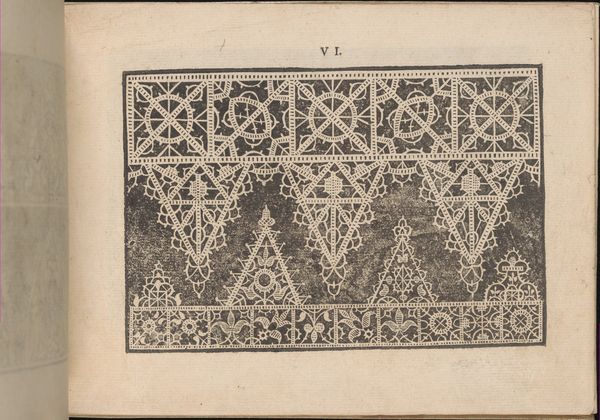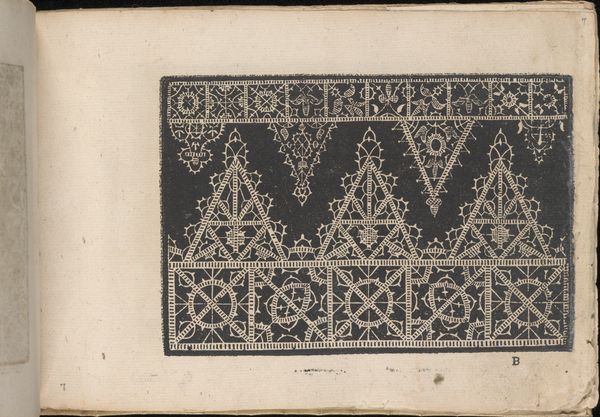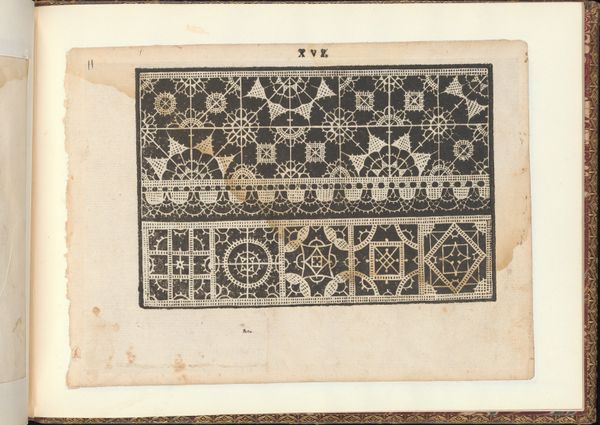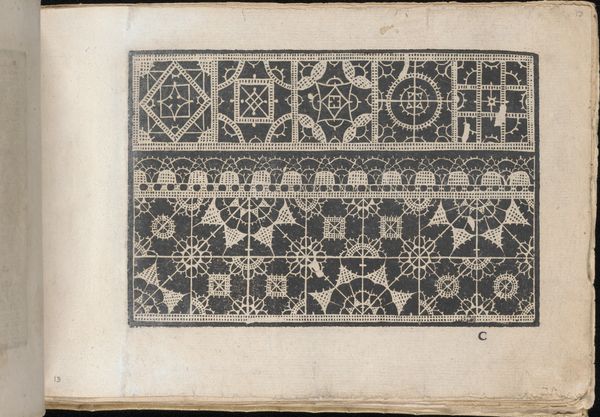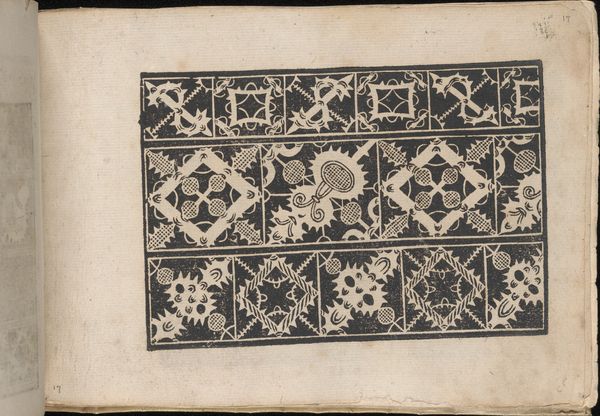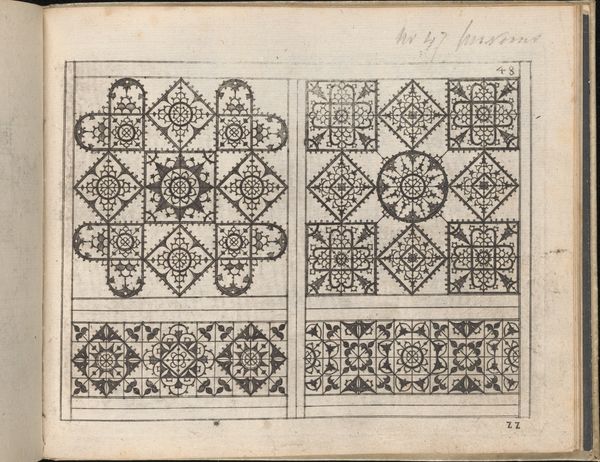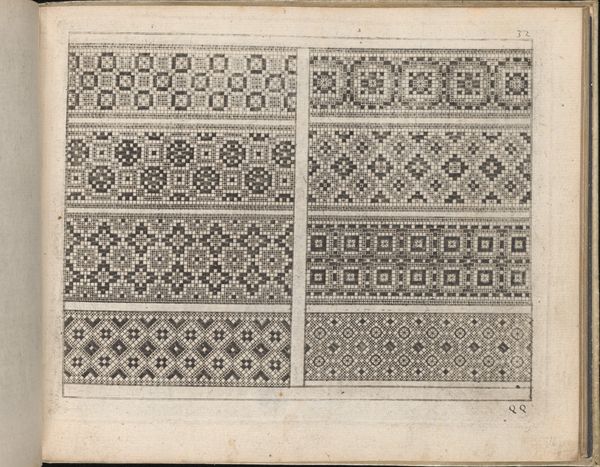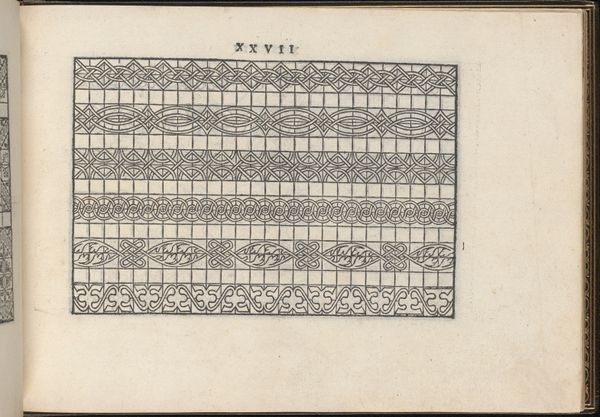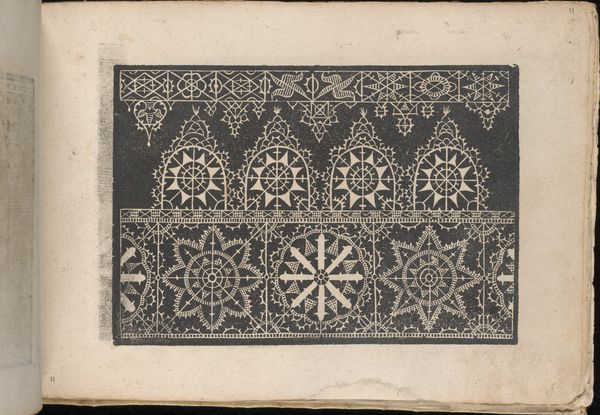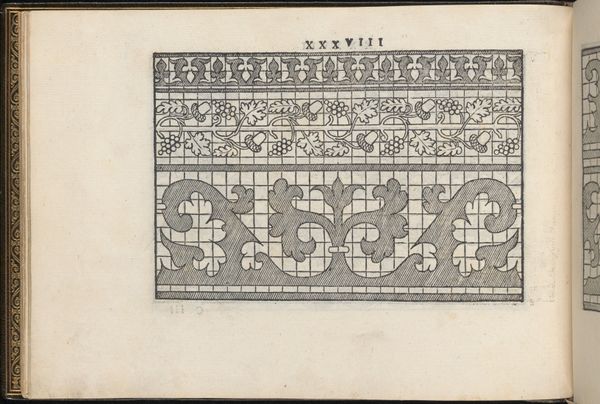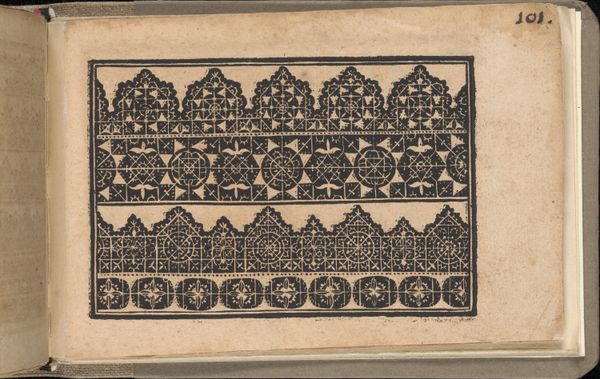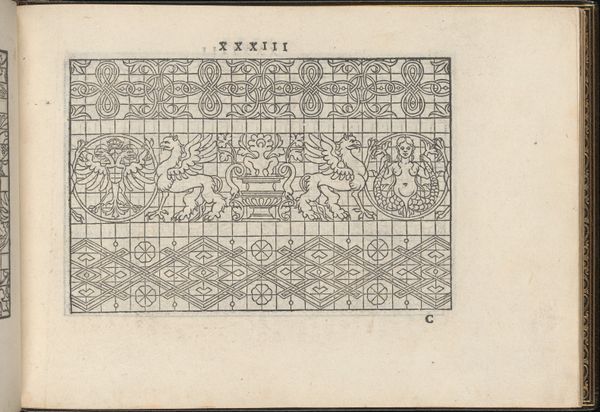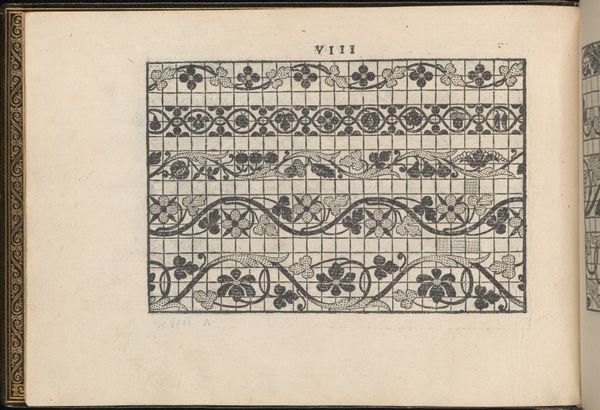
Prima Parte de' Fiori, e Disegni di varie sorti di Ricami Moderni, page 10 (recto) 1591
0:00
0:00
drawing, graphic-art, ornament, print, intaglio, paper
#
drawing
#
graphic-art
#
aged paper
#
ornament
#
toned paper
#
ink paper printed
# print
#
book
#
intaglio
#
paper texture
#
paper
#
geometric
#
italian-renaissance
#
italy
Dimensions: Overall: 5 5/16 x 7 5/16 in. (13.5 x 18.5 cm)
Copyright: Public Domain
Editor: So, this is a page from *Prima Parte de' Fiori, e Disegni di varie sorti di Ricami Moderni* by Giovanni Battista Ciotti, dating to 1591. It's an intaglio print on paper, depicting patterns. What I immediately notice is how intricate the designs are. The geometric patterns are almost overwhelming, like an early form of information overload! As a historian, what’s the first thing that jumps out at you about this work? Curator: The first thing I see is the rise of print culture and its democratizing potential. These pattern books, and there were many, weren't just aesthetic objects; they were tools. How do you think the availability of these designs impacted craftswomen and the broader culture? Editor: I guess it would give more people access to fashionable designs! Maybe even level the playing field a bit, empowering those without direct access to elite circles? Curator: Exactly. Prior to readily available printed designs, new styles would primarily disseminate through courts and wealthy patrons. The creation of printed pattern books shifted that dynamic and commercialized designs. Imagine the workshops adopting and adapting these ideas. Where do you see these patterns appearing in domestic or commercial spaces? Editor: Perhaps on clothing, linens, furniture…pretty much anywhere! And could this standardization affect regional styles, potentially homogenizing tastes across greater distances? Curator: Absolutely! And what do you make of the abstraction? Do these shapes and patterns speak to a wider cultural visual language beyond simple utility? Consider how these seemingly simple decorations reinforced notions of order, beauty, and even status. Editor: That makes me think about the power of repeated patterns in things like wallpaper or textiles, and how they contribute to a certain feeling of harmony, but maybe also control? It’s interesting how this seemingly simple craft has such historical weight. Curator: Precisely. Looking at these printed patterns prompts us to examine the fascinating interplay between art, craft, commerce, and the social hierarchies of the Renaissance. Editor: Thanks, this really helped to give context. I learned a lot. Curator: My pleasure, reflecting on the cultural influence of these beautiful, patterned designs gives a broader perspective and better appreciation.
Comments
No comments
Be the first to comment and join the conversation on the ultimate creative platform.
